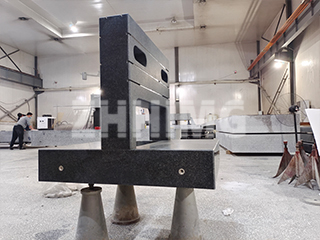Introduction to Digital Vernier Calipers
Digital Vernier Calipers, also known as electronic digital calipers, are precision instruments widely used for measuring lengths, internal and external diameters, and depths. These tools feature intuitive digital readouts, ease of use, and multifunctional capabilities.
A typical digital caliper consists of the main scale, a sensor, a control unit, and a digital display. According to the sensor technology, digital calipers are generally categorized into two types: magnetic scale digital calipers and capacitive digital calipers.
Working Principle
The main scale of the digital caliper incorporates a high-precision rack. Movement of the rack drives a circular grating wheel that produces photoelectric pulses. Using this pulse counting method, the caliper converts the displacement of the measuring jaws into electronic signals. These signals are then processed and displayed as numerical values on the digital screen.
Operating Instructions
Preparation
-
Wipe and clean the surface of the caliper and measuring jaws.
-
Loosen the locking screw and slide the jaw to check if the display and buttons function correctly.
Measurement Procedure
-
Press the power button to turn on the caliper.
-
Use the unit conversion button to select between metric (mm) and imperial (inch) units.
-
Slide the jaws until the external measuring faces gently touch the object, then press the zero button to reset. Proceed with measurement.
Reading Measurements
Read the measurement value directly from the LCD display window.
Advantages of Digital Vernier Calipers
-
Labor-saving and Efficiency: When connected to data acquisition devices, digital calipers eliminate manual data recording, reducing labor costs.
-
Multi-device Connectivity: Data collectors can connect to multiple instruments simultaneously for automatic measurements.
-
Data Management: Measurement results are saved on storage media and can be exported via USB for analysis or accessed remotely over networks.
-
Error Prevention and Alerts: Built-in software provides visual and audio warnings if measurements exceed preset tolerances.
-
Portability: Supports on-site measurements, allowing operators to perform quality inspections directly at the production line.
-
Manual Input Support: Allows manual data entry to avoid double recording and save labor.
Common Issues and Solutions
Why do digital calipers sometimes show erratic readings?
Most digital calipers use capacitive sensors that translate mechanical displacement into electrical signals. When liquids like water or cutting fluids, or even sweat from the operator’s hands, contaminate the scale, they can interfere with signal transmission, causing display errors.
How to fix display glitches?
Use a small amount of alcohol and cotton balls:
-
Dampen cotton lightly with alcohol (do not oversaturate).
-
Gently wipe the scale surface to remove any contaminants.
-
Repeat wiping as necessary, ensuring no excess liquid enters the electronics.
This cleaning method effectively restores proper functioning of the digital caliper.
Post time: Aug-13-2025

